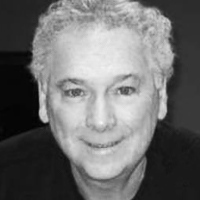Question
What are some suggestions for working with a child who has laryngeal papilloma, and the physician is advising speech therapy? However, the child is only 4, and continues to have surgeries. What is the best practice? Should therapy begin and what type?
Answer
As you may be already aware, laryngeal papilloma is an organic disorder frequently requiring surgical-medical intervention. Papillomas are caused by a virus, which produces a wart-like growth that tends to proliferate, and can be life threatening if the airway becomes compromised. Unfortunately, papillomas frequently require repeated surgeries for removal due to their propensity to return. The papilloma should only be surgically removed if the airway is in danger of becoming obstructed since repeated surgeries can result in scarring of the vocal folds, vocal fold edema, or can produce laryngeal webs, all of which should be avoided if possible. Papillomas occur primarily in children under the age of six. Fortunately, they often resolve around the time of puberty (Boone, McFarlane, & Von Berg, 2005).
What can we do in speech therapy while the doctors are managing the papillomas? The management of the papillomas may be prolonged because they tend to reoccur. Because the child will be attempting to vocalize with a compromised mechanism during this time, it is very important that we try to prevent the child from developing any poor compensatory hyperfunctioning vocal habits. Prolonged hyperfunctioning may result in a tense, hoarse vocal quality, which can adversely affect the margin of the vocal folds. Andrews and Summers (2002) reported a case where a child developed ventricular phonation as a effortful compensatory behavior following surgery for removal of papillomas.
In an effort to prevent these maladaptive behaviors from occurring, Colton, Casper, and Leonard (2006, p. 329) suggest elimination of the "harmful behaviors through the reduction of laryngeal tension, institution of a vocal hygiene program, environmental manipulation, easy voice production, and establishment of improved vocal habits". In essence, we must help the children take the effort out of phonation in order to reduce the possibility of hyperfunctioning from occurring and to assist them find their "best sounding" voice. To accomplish these modifications with a four-year-old will be particularly challenging because four-year-olds are not proficient at monitoring their own behaviors. However, to begin an awareness program, you might consider playing with two puppets: one that uses a forceful approach to phonation, and one that uses a light-easy approach to phonation. Have the child discriminate between the two voices and play games where the child is required to use the easy-light phonation for rewards. Parental involvement is critical successful therapy. Parents will need to serve as vigilant monitors of the new vocal behaviors you teach.
Andrews, M., Summers, A. (2002). Voice treatment for children and adolescents. San Diego, CA: Singular Thompson Learning.
Boone, D., McFarland, S., Von Berg, S. (2005). The voice and voice therapy (7th ed.). Boston, MA: Pearson Allyn and Bacon.
Colton, R., Casper, J., Leonard, R. (2006). Understanding Voice Problems: A physiological perspective for diagnosis and treatment (3rd ed.). New York, NY: Lippincott Williams and Wilkins.
Dr. Harmon is a Professor on the graduate faculty at Mississippi University for Women. She currently teaches graduate courses in Fluency Disorders, Motor Speech Disorders, Phonological and Articulatory Disorders, and Voice Disorders. Dr. Harmon has been an invited speaker in the area of stuttering therapy with state and regional associations and with Northern Speech Services across the country.

